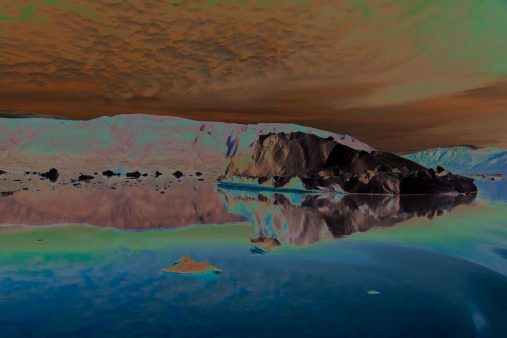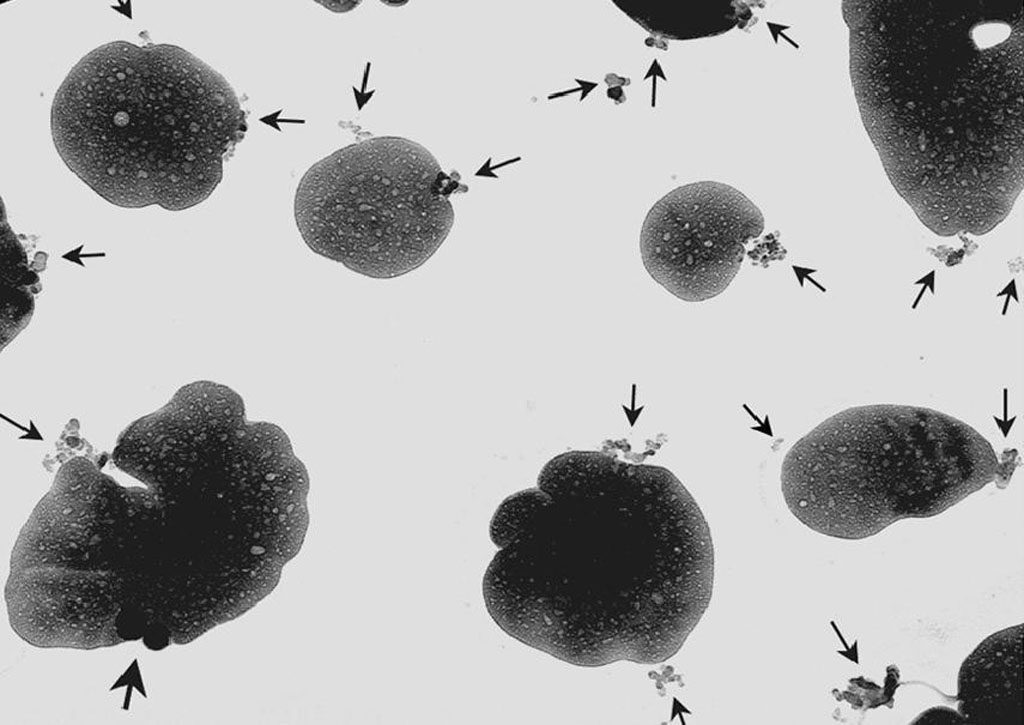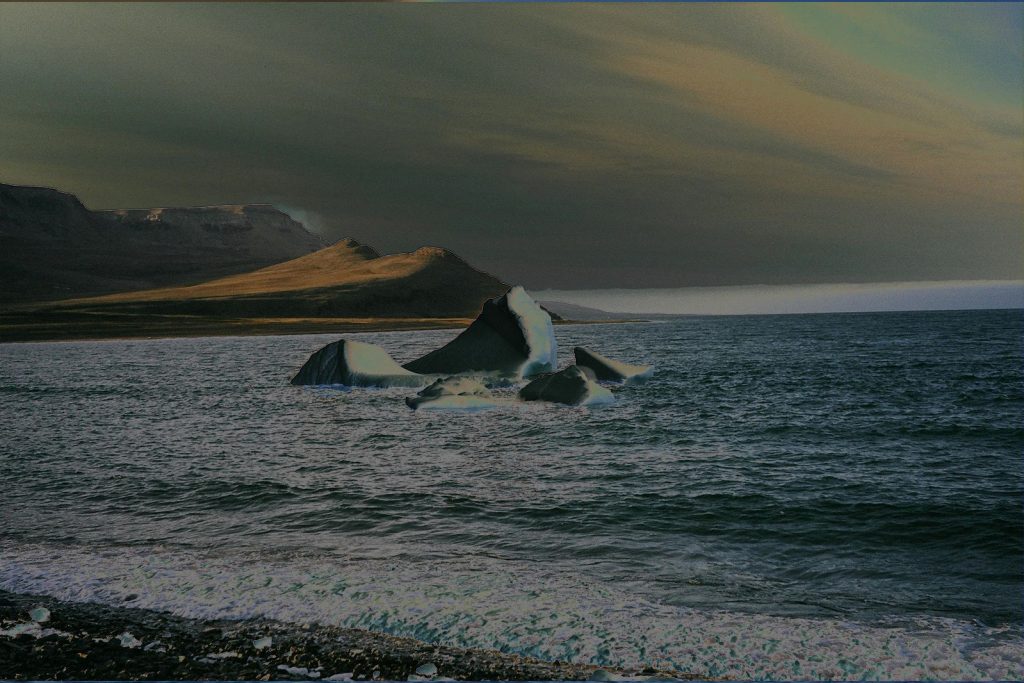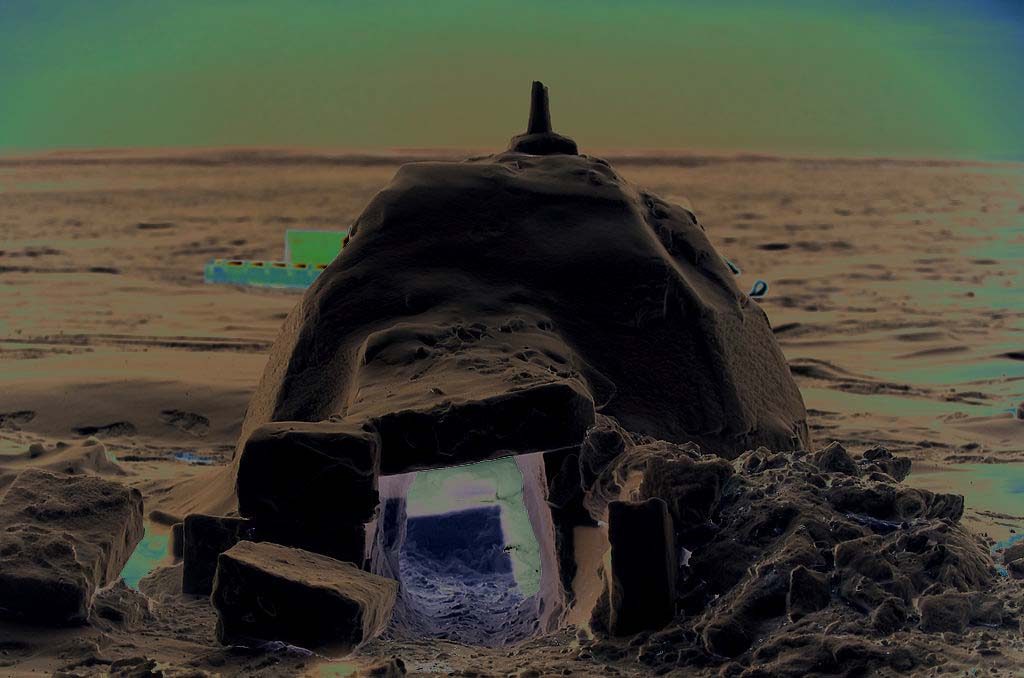Black carbon is not cool
4 September 2019
By Carol Devine
Last minute in the late summer of 2017, I joined an all-female sailing expedition to circumnavigate Scotland called eXXpedition, with the two Xs to indicate the female related to our goal to look at toxins including endocrine disruptors in our global environment that can cause disease, as well as to explore the issue of plastics and chemicals polluting our oceans and waterways. The tag line is “see the unseen”; that is the plastics and toxins that ‘break up’ into our life-giving waters.
Recently, I couldn’t look at a photo of an iceberg without solarizing it. I had black carbon on the brain and wanted to know the role this tiny vexing particle plays in climate warming, harm to health, and what we can do about it. As our human action alters the state of ice, I also experimented with altering ice and playing with ‘negatives’ to symbolically show how our actions are changing things dear and essential to us. Rapid and irreversible change of icebergs and glaciers from light to dark (melting away) is a play on how quickly the Arctic and glaciers everywhere are melting – not to mention the summer of 2019 – at our peril. This series is a call to action.
Shipping and dark snow
Black Carbon is like what you might imagine. It’s tiny dark particles of pure carbon. I first learned of Black Carbon in Iceland in 2016 at the Arctic Circle Assembly. Panelists were addressing topics from the rapid increase of Arctic shipping due to dwindling sea ice, search and rescue, oil spills, indigenous rights and this ominous thing I hadn’t heard of before.
Two thirds of black carbon in the Arctic is traced to use of heavy fuel oil (HFO), which emits black carbon during combustion. According to the International Council on Clean Transportation, “HFO is the bottom of the barrel leftovers from the oil refining process. It is incredibly viscous…the consistency of peanut butter. HFO is the preferred fuel for the marine shipping industry because it’s cheap, widely available, and large marine engines are built to handle it.”
Black carbon gets into our atmosphere through HFO that many ships use as well as through burning for agriculture, wildfires, wood combustion for heating, and gas flaring.
I immediately wanted to see what it black carbon looked like, a component of fine particulate matter. I found an electron microscope image of black carbon clumps attaching to sulfates.

These wee particles wreak havoc especially in the Arctic and everywhere south. But that’s the last I thought about Black Carbon – until last summer on a sailboat in the Irish Sea.
At the 11th hour I joined and all-female sailing expedition circumnavigating the UK to do a survey of plastics and toxins. In every sample we found visible plastics, and the finer samples we sent to labs and early results showed microplastics, tiny plastics. Evidence grows daily on the potential harm of microplastics on human and marine ecosystem health.
On this expedition I met Dr. Lucy Gilliam, the eXXpedition co-founder, an avid sailor and an inspiring environmental scientist. We got talking about black carbon as she works on clean shipping. Lucy asked me if I’d help seek signatories for and sign a commitment to ban use of HFO in the Arctic for the campaign to phase out the use of heavy fuel oil from Arctic shipping, led by 15 not-for-profit organisations.
Exploring Black Carbon
I needed to know more about black carbon, so I could support this campaign in a more informed way. I found that these particles and the sun are tied together. Black carbon matter absorbs sunlight and give soot it’s black hue, creating “dark snow” seen on glaciers from Canada and Greenland to the Himalayas.
Renee Cho of Columbia University’s Earth Institute says, “black carbon is the most solar energy-absorbing component of particulate matter and can absorb one million times more energy than CO2…When it falls to earth with precipitation, it darkens the surface of snow and ice, reducing their albedo (the reflecting power of a surface), warming the snow, and hastening melting.”
This “fine” matter is a short-lived pollutant that stays in the atmosphere only a few weeks but is a leading contributor to global climate change, possibly second only to CO2. One night I solarized a few of my iceberg shots from an Arctic cleanup expedition I did. I looked for other digital open-source ice images and solarized them. The new views are beautiful and disturbing: a foreboding altered state – both real and metaphoric.


As the sun plays a big role in black carbon contributing to ice melt and input into oceans, I played with reversing the ice’s tone. Years ago, I learned that photographer, war correspondent and surrealist Lee Miller inadvertently discovered solarization in her darkroom with Man Ray; she turned on a light before the negatives were developed. Already I was intrigued by the solarization look and technique, and something about negatives and icebergs compelled me.
Black carbon doesn’t blacken icebergs completely like these ice in this series Black Carbon Is Not Cool, but it contributes to flipping our icebergs and as such, our planet, on its side.Each year millions of people die prematurely due to air pollution, largely caused by inhalation of particulate matter. Black carbon is a component of this, humans inhale it easily. In 2014 the World Health Organization said that air pollution is the greatest global environmental health risk.
Good news and Keeping our Cool
Cutting black carbon emissions, reducing use of HFO immediately reduces warming, especially in the fragile Arctic that warms faster than all predictions. As a humanitarian and global health activist, I want to share about black carbon’s health harms as well as the good news that reducing exposure to black carbon has health co-benefits.
Glaciers are by nature dynamic, but we have changed the dynamics for the worse with our carbon obsession and the way we treat the planet and especially rich countries, pillage and wantonly use natural resources. I’m buoyed and hopeful though that there are many past and current earth stewards, scientists and innovators protecting mother nature and standing for humanity and earth. Technical solutions won’t be the answer without political will.
Action matters and that’s the way to go so we have a more just and healthy way of living on this planet for people, species and nature. Atmospheric scientist Mark Jacobson of Stanford Universityrecently said, “controlling black carbon may be the only way of preventing the loss of the Arctic completely.”
Let’s keep ice snow white and cold and wild things wild for now and future generations.
Carol Devine is a social scientist, writer and artist. She is a community fellow at the Dahdaleh Institute for Global Health Research in Toronto working on climate change and health. In additional to joining eXXPedition’s Round Scotland marine debris research and women in adventure voyage, she participated in Clean Up Svalbard citizen expedition and led the first environmental clean up expedition to the Antarctic with the Russian Antarctic Expedition.
This post was partially adapted from an original post in ‘Wild Culture‘: When Ice Molecules Meet Black Carbon.
The Black Carbon is not cool series is a mini-exhibit I made to better understand and visualize this harmful particle largely related to heavy fuel oil used in shipping. The Arctic sea ice vanishing is rapidly opening alternate shipping routes, making the routesfrom Asia and ports in Europe and eastern North America potentially more direct and quick – but at a cost to northern communities and health especially if cleaner fuel isn’t adopted by companies. I wanted to share my name with the heavy fuel oil activism and sign the Arctic Commitment (Calling for a phase-out of the use of heavy fuel oil by ships in a timely manner and urge International Maritime Organization Member States and stakeholders to advance this goal), and as such I wanted to see what I was talking about. I thought I could humbly also shine more light on the issue with visual representations of ice under threat.
- From the Floe Edge: Visualising Sea Ice in Kinngait, Nunavut
- Bridging Knowledge and Action: A Polish-Norwegian Perspective on Arctic Science-Policy Collaboration
- Unpacking the Motivation Behind Wintering at Polar Stations
- Working the Ocean’s White Gold: A Nutshell History of a Living Bering Strait Tradition
- Political Participation in the Arctic: Who is heard, when, and how?